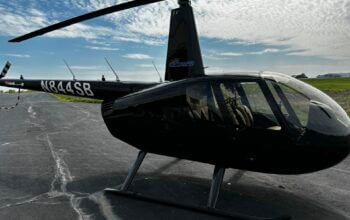Estimated reading time 7 minutes, 1 seconds.

A worrisome rise in runway incursions in the United States this year has prompted a safety push from the business aviation community, with notable applications for Canadian operators.
The U.S. Federal Aviation Administration (FAA) reports 1,756 runway incursions in the 2023 fiscal year, 26 more than in 2022. While this amounts to a 1.5 per cent year-over-year increase, and a small fraction of total aircraft movements in the U.S., industry stakeholders are trying to prevent further incidents after a run of near-misses and high-profile media coverage.
“Safety has always been the very foundation of aviation,” said Ed Bolen, president and CEO of the National Business Aviation Administration (NBAA) in a webinar on Nov. 28.
“We need to be safe, and we need to be perceived to be safe; that’s our constant challenge. It’s something we need to work on, on a daily basis. This year has been a particularly challenging one.”
The FAA defines a runway incursion as any incident at an aerodrome involving the incorrect presence of an aircraft, vehicle or person in the protected area of a takeoff or landing surface.
These can include collisions and near-misses, along with cases in which the threat of an accident is relatively small or has no immediate safety consequences.
NBAA is also concerned about runway excursions — when an aircraft overruns or veers off the side of the runway surface — which it said are the leading cause of accidents in business aviation.
Over a five-year period ending in 2022, business jet operations experienced 79 runway excursions, accounting for nearly 41 per cent of business jet accidents during that period. Six of those excursions were fatal, resulting int 18 total deaths, the NBAA said.
“We’re coming together in a very important time,” added Bolen. “We’re very focused on making sure that we can operate safely, despite the fact we have a very diverse community and we operate across thousands of runways.”
On Nov. 27, 2023, the NBAA released a 25-page safety guide aimed at reducing runway excursions, followed by a one-hour webinar on Nov. 28 aimed at elevating runway and surface safety in general.
The guide examines some of the psychological and physical factors that cause excursions on takeoffs and landings, and offers tips on how to address them in training programs and safety management systems.
In addition to aircraft damage and loss of life, excursions can lead to costly litigation and harm the reputation of operators and pilots, the NBAA noted. These kinds of incidents have also fuelled significant insurance premium increases in recent years, it said.
In Canada, the rate of runway incursions doubled over a 12-year period ending in 2021, making it one the most concerning issues identified by the country’s Transportation Safety Board (TSB).
Nav Canada, the nation’s air traffic control provider, recorded 471 total runway incursions in Canada 2021. Only one incident was considered “high risk,” but the TSB noted the consequences of a collision could be “catastrophic,” given the risk of injury and death.
Partly in response to this, technology-driven safety aids like electronic flight bags with moving maps are becoming more prevalent with operators across the country. Nav Canada has also amended its radio communications protocols, so instructions are better understood and followed, TSB said.
Meanwhile, some Canadian airports have implemented design changes, including angled holding positions, to increase situational awareness among flight crews.
Last year, the TSB included concern about the risk of collisions from runway incursions on its most recent Watchlist, a catalogue of key safety issues in Canada’s transportation system.
TSB said the issue will remain on its Watchlist until it sees “effective defences” to prevent these kinds of incidents at incursion hot-spots; or sustained reductions in the rate of incursions, including high-risk incidents.
“There is no single solution that will reduce the risk of runway incursions nationwide,” the TSB said at the time.
“Rather, solutions tailored for each airport, in combination with wider-reaching technological advancements such as in-cockpit situational awareness aids and runway status lights, may be more effective.”








